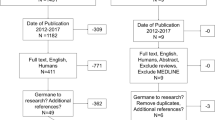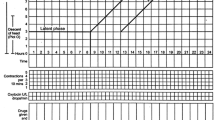Abstract
Objective
This study examines improvement in birth certificate accuracy during a statewide quality improvement initiative.
Study design
Participating hospitals systematically sampled 10 delivery medical records per month and compared them to corresponding birth certificates for accuracy. Accuracy was computed before implementing the initiative (Aug–Oct 2014), end of phase 1 (July 2015) and end of phase 2 (Nov–Dec 2015). Accuracy data was aggregated and compared across time points using a linear mixed model and by hospital characteristics.
Results
105 hospitals participated. Birth certificate accuracy increased between baseline (89.59%) and end of phase 2 (97.00%, p < 0.001). Percent accuracy at baseline was lowest in hospitals serving at-risk populations (p < 0.01). These hospitals showed relatively greater increases in overall accuracy with no difference in accuracy by the end of the initiative.
Conclusions
A statewide QI effort contributed to improvements in birth certificate accuracy. Hospitals serving at-risk populations exhibited the greatest benefit and improvement.

Similar content being viewed by others
Data availability
The datasets generated during and/or analyzed during the current study are available from the corresponding author on reasonable request.
References
American College of Obstetricians and Gynecologists Committee on Health Care for Underserved Women. ACOG committee opinion no. 639: the importance of vital records and statistics for the obstetrician-gynecologist. Obstet Gynecol. 2015;126:e28–30.
National Center for Health Statistics; US Department of Health and Human Services; Centers for Disease Control and Prevention. Guide to completing the facility worksheets for the certificate of live birth and report of fetal death. 2003 revision. Available at: http://www.cdc.gov/nchs/data/dvs/ GuidetoCompleteFacilityWks.pdf. Accessed February 16, 2017.
Howland RE, Madsen AM, Toprani A, Gambatese M, Mulready-Ward C, Begier E. How well do birth records serve maternal and child health programs? Birth registration system evaluation, New York City, 2008–2011. Matern Child Health. 2015;19:1559–66.
Kjerulff KH, Attanasio LB. Validity of birth certificate and hospital discharge data reporting of labor induction. Women’s Health Issues. 2017;28:82–8.
Stout MJ, Macones GA, Tuuli MG. Accuracy of birth certificate data for classifying preterm birth. Paediatr Perinat Epidemiol. 2017;31:245–9.
Lannon C, Kaplan HC, Friar K, Fuller S, White B, Bels J, et al. Using a state birth registry as a quality improvement tool. Perinatology. 2017;34:0958–65.
Melnik TA, Guldal CG, Schoen LD, Alicandro J, Henfield P. Barriers in accurate and complete birth registration in New York State. Matern Child Health J. 2015;19:1943–8.
Bailit JL, Iams J. 127: changes in scheduled delivery indication during the Ohio Perinatal Quality Collaborative. Obstet Gynecol. 2011;204:S64–5.
Ohio Perinatal Quality Collaborative. 588: Monitoring elective induction rates using birth certificate data vs. chart abstraction. Obstet Gynecol. 2009;201:S217.
Main EK, Cape V, Abreo A, Vasher J, Woods A, Carpenter A, et al. Reduction of severe maternal morbidity from hemorrhage (SMM-HEM) using a state-wide perinatal collaborative. Obstet Gynecol. 2017;216:S37.
Bailit JL. Rates of labor induction without medical indication are overestimated when derived from birth certificate data. Obstet Gynecol. 2010;203:269.e1–269.e3.
Kaplan HC, Mangeot C, Sherman SN, Cleveland C, Fuller S, White BE, et al. Dissemination of a quality improvement intervention to reduce early term elective deliveries and improve birth registry accuracy at scale in Ohio. Implement Sci. 2015;10 (Suppl 1) A2.
Illinois Department of Public Health (29 June, 2020). Perinatal regionalization. Retrieved from https://www.dph.illinois.gov/topics-services/life-stages-populations/infant-mortality/perinatal-regionalization.
Illinois Perinatal Quality Collaborative (29 June, 2020). A guide to entering 17 key variables in the Illinois vital records system. Retrieved from https://ilpqc.org/ILPQC%202020%2B/Birth%20Certificate%20Accuracy/ILPQC-variables_guide_Approved_v3.pdf.
Illinois Department of Public Health (21 February 2019). Perinatal levels of care: Rewriting the administrative rules. Retrieved from http://www.dph.illinois.gov/topics-services/life-stages-populations/maternal-child-family-health-services/perinatal-levels-of-care.
Cnaan A, Laird NM, Slasor P. Using the general linear mixed model to analyse unbalanced repeated measures and longitudinal data. Stat Med. 1997;16:2349–80.
SQUIRE. Revised Standards for Quality Improvement Reporting Excellence (SQUIRE 2.0). SQUIRE 2015. Retrieved from https://www.squire-statement.org/index.cfm?fuseaction=page.viewPage&pageID=471&nodeID=1#notes.
Salemi JL, Tanner JP, Sampat DP, Rutkowski RE, Anjohrin SB, Marshall J, et al. Evaluation of the sensitivity and accuracy of birth defects indicators on the 2003 revision of the U.S. birth certificate: Has data quality improved? Pediatr Perinat Epidemiol. 2017;31:67–75.
Henderson ZT, Ernst K, Simpson KR, Berns S, Suchdev DB, Main E, et al. The national network of state perinatal quality collaboratives: a growing movement to improve maternal and infant health. J Women’s Health. 2018;27:221–6.
Acknowledgements
Thank you to our collaborators who made this work possible, including ILPQC Hospital Teams, ILPQC Obstetric Advisory Work Group and Clinical Leadership, IDPH Vital Records and Regionalized Perinatal System, and the Illinois Hospital Association.
Funding
The Birth Certificate Accuracy Initiative was funded by the Centers for Disease Control and Prevention, National Center for Chronic Disease Prevention and Health Promotion CDC-RFA-DP14-1404, the Illinois Department of Public Health U38DP005367, and the CHIPRA Quality Demonstration Grant subcontract through Health Management Associates #3001.
Author information
Authors and Affiliations
Contributions
PLK, KF, PS, and ABorders designed and implemented the study and helped write the manuscript. EO and SL conducted statistical analysis and helped write the manuscript. ABennett contributed to study design and provided methods and epidemiology insight. PLK, KF, PS, ABorders, EO, SL, and ABennett critically reviewed the manuscript and have approved the final version of the article.
Corresponding author
Ethics declarations
Competing interests
The authors declare no competing interests.
Additional information
Publisher’s note Springer Nature remains neutral with regard to jurisdictional claims in published maps and institutional affiliations.
Rights and permissions
Springer Nature or its licensor (e.g. a society or other partner) holds exclusive rights to this article under a publishing agreement with the author(s) or other rightsholder(s); author self-archiving of the accepted manuscript version of this article is solely governed by the terms of such publishing agreement and applicable law.
About this article
Cite this article
Lee King, P.A., Finnegan, K., Schneider, P. et al. Optimizing accuracy of birth certificate data through a statewide quality improvement initiative in Illinois. J Perinatol 43, 1440–1445 (2023). https://doi.org/10.1038/s41372-023-01788-0
Received:
Revised:
Accepted:
Published:
Issue Date:
DOI: https://doi.org/10.1038/s41372-023-01788-0
- Springer Nature America, Inc.




